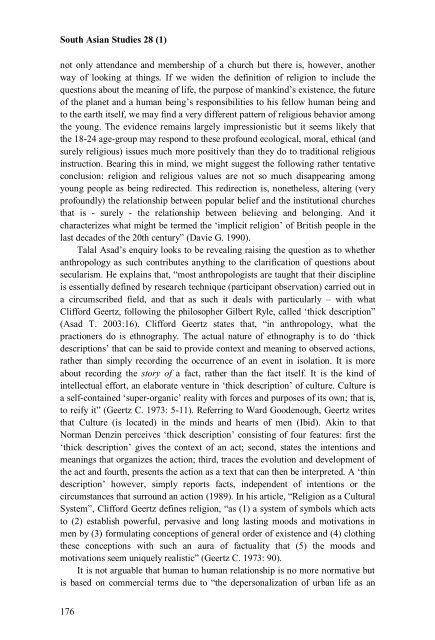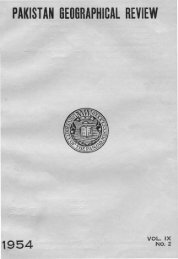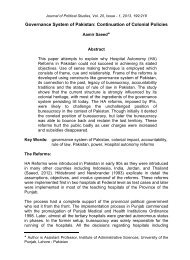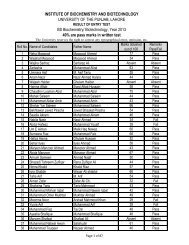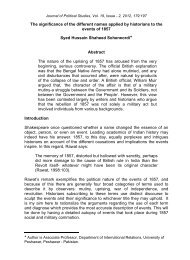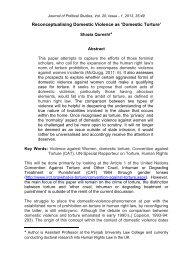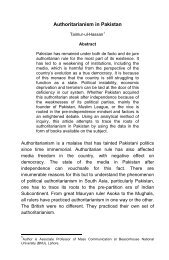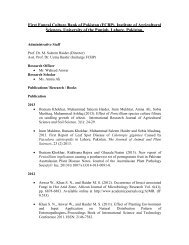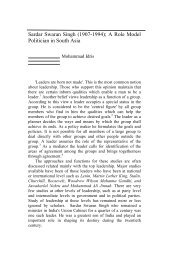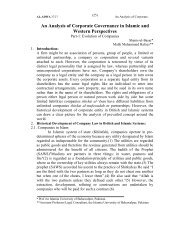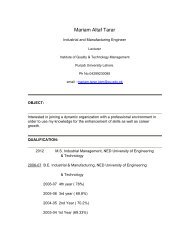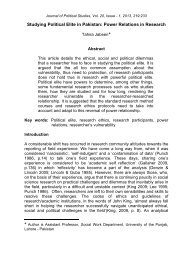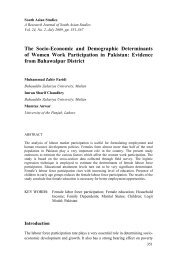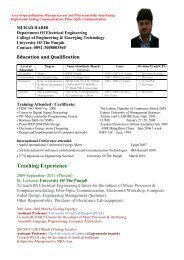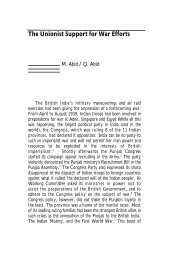Can Pakistan be a Secular State? - University of the Punjab
Can Pakistan be a Secular State? - University of the Punjab
Can Pakistan be a Secular State? - University of the Punjab
Create successful ePaper yourself
Turn your PDF publications into a flip-book with our unique Google optimized e-Paper software.
South Asian Studies 28 (1)<br />
not only attendance and mem<strong>be</strong>rship <strong>of</strong> a church but <strong>the</strong>re is, however, ano<strong>the</strong>r<br />
way <strong>of</strong> looking at things. If we widen <strong>the</strong> definition <strong>of</strong> religion to include <strong>the</strong><br />
questions about <strong>the</strong> meaning <strong>of</strong> life, <strong>the</strong> purpose <strong>of</strong> mankind’s existence, <strong>the</strong> future<br />
<strong>of</strong> <strong>the</strong> planet and a human <strong>be</strong>ing’s responsibilities to his fellow human <strong>be</strong>ing and<br />
to <strong>the</strong> earth itself, we may find a very different pattern <strong>of</strong> religious <strong>be</strong>havior among<br />
<strong>the</strong> young. The evidence remains largely impressionistic but it seems likely that<br />
<strong>the</strong> 18-24 age-group may respond to <strong>the</strong>se pr<strong>of</strong>ound ecological, moral, ethical (and<br />
surely religious) issues much more positively than <strong>the</strong>y do to traditional religious<br />
instruction. Bearing this in mind, we might suggest <strong>the</strong> following ra<strong>the</strong>r tentative<br />
conclusion: religion and religious values are not so much disappearing among<br />
young people as <strong>be</strong>ing redirected. This redirection is, none<strong>the</strong>less, altering (very<br />
pr<strong>of</strong>oundly) <strong>the</strong> relationship <strong>be</strong>tween popular <strong>be</strong>lief and <strong>the</strong> institutional churches<br />
that is - surely - <strong>the</strong> relationship <strong>be</strong>tween <strong>be</strong>lieving and <strong>be</strong>longing. And it<br />
characterizes what might <strong>be</strong> termed <strong>the</strong> ‘implicit religion’ <strong>of</strong> British people in <strong>the</strong><br />
last decades <strong>of</strong> <strong>the</strong> 20th century” (Davie G. 1990).<br />
Talal Asad’s enquiry looks to <strong>be</strong> revealing raising <strong>the</strong> question as to whe<strong>the</strong>r<br />
anthropology as such contributes anything to <strong>the</strong> clarification <strong>of</strong> questions about<br />
secularism. He explains that, “most anthropologists are taught that <strong>the</strong>ir discipline<br />
is essentially defined by research technique (participant observation) carried out in<br />
a circumscri<strong>be</strong>d field, and that as such it deals with particularly – with what<br />
Clifford Geertz, following <strong>the</strong> philosopher Gil<strong>be</strong>rt Ryle, called ‘thick description”<br />
(Asad T. 2003:16). Clifford Geertz states that, “in anthropology, what <strong>the</strong><br />
practioners do is ethnography. The actual nature <strong>of</strong> ethnography is to do ‘thick<br />
descriptions’ that can <strong>be</strong> said to provide context and meaning to observed actions,<br />
ra<strong>the</strong>r than simply recording <strong>the</strong> occurrence <strong>of</strong> an event in isolation. It is more<br />
about recording <strong>the</strong> story <strong>of</strong> a fact, ra<strong>the</strong>r than <strong>the</strong> fact itself. It is <strong>the</strong> kind <strong>of</strong><br />
intellectual effort, an elaborate venture in ‘thick description’ <strong>of</strong> culture. Culture is<br />
a self-contained ‘super-organic’ reality with forces and purposes <strong>of</strong> its own; that is,<br />
to reify it” (Geertz C. 1973: 5-11). Referring to Ward Goodenough, Geertz writes<br />
that Culture (is located) in <strong>the</strong> minds and hearts <strong>of</strong> men (Ibid). Akin to that<br />
Norman Denzin perceives ‘thick description’ consisting <strong>of</strong> four features: first <strong>the</strong><br />
‘thick description’ gives <strong>the</strong> context <strong>of</strong> an act; second, states <strong>the</strong> intentions and<br />
meanings that organizes <strong>the</strong> action; third, traces <strong>the</strong> evolution and development <strong>of</strong><br />
<strong>the</strong> act and fourth, presents <strong>the</strong> action as a text that can <strong>the</strong>n <strong>be</strong> interpreted. A ‘thin<br />
description’ however, simply reports facts, independent <strong>of</strong> intentions or <strong>the</strong><br />
circumstances that surround an action (1989). In his article, “Religion as a Cultural<br />
System”, Clifford Geertz defines religion, “as (1) a system <strong>of</strong> symbols which acts<br />
to (2) establish powerful, pervasive and long lasting moods and motivations in<br />
men by (3) formulating conceptions <strong>of</strong> general order <strong>of</strong> existence and (4) clothing<br />
<strong>the</strong>se conceptions with such an aura <strong>of</strong> factuality that (5) <strong>the</strong> moods and<br />
motivations seem uniquely realistic” (Geertz C. 1973: 90).<br />
It is not arguable that human to human relationship is no more normative but<br />
is based on commercial terms due to “<strong>the</strong> depersonalization <strong>of</strong> urban life as an<br />
176


